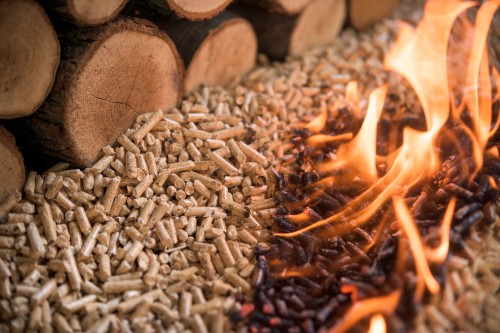HOW ARE PELLETS BEING PRODUCED?
Compared to other technologies of up- grading biomass, pelletisation is a fairly efficient, simple and low cost process. The four key steps within this process are:
• pre-milling of raw material
• drying of raw material
•milling of raw material
• densification of the product
These steps enable the production of a homogeneous fuel with low humidity and high energy density. In case dry raw materials are available, only milling and densification is necessary.
Currently about 80 % of globally produced pellets are made from woody bio- mass. In most cases, by-products from saw mills such as saw- dust and shavings are used. Some large pellet mills also use low value wood as raw material. An increasing volume of traded pellets are being made from such materials as empty fruit bunch (from oil palm), bagasse, and rice husk.
Large scale production technology
The world’s largest pellet plant in terms of pellet output is the Georgia Biomass Plant (USA) constructed by Andritz. This plant uses fast growing wood logs produced in pine plantations. The logs are debarked, chipped, dried and milled before densification in pellet mills. The Georgia Biomass Plant capacity is about 750 000 tonnes of pellets a year . The wood demand of this plant is similar to that of an average paper mill.
Small-scale production technology
Small-scale technology for pellet production is typically based on sawdust shavings and off-cuts from sawmills or wood processing industries (Producers of floors, doors and furniture etc.) which adds value to their by-products by converting into pellets. Dry raw material is milled, and if needed, adjusted to precisely the right amount of humidity and the optimum temperature by pre-conditioning with steam prior to entering the pellet mill where it is densified. A cooler after the pellet mill reduces the temperature of the hot pellets after which the pellets are sifted be- fore being bagged, or conveyed to finished product storage.
Post time: Sep-01-2020










